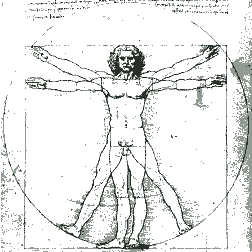
THEORIES OF ARCHITECTURE DESIGN
BUILDING AND BODY
The connection and relationship in buildings and body is always strong. Today, with more research and widen of the field, it is only inevitable the connection has strengthen since then.
During the early period of architecture, what enhances the relationship between both body and the buildings was on the symmetry and proportion of the buildings, similar to the human body in terms of the qualities of ratios and symmetry. Those are the sentiments of Marcus Vitruvius, where he then goes on comparing the ratio between different parts of human bodies, and to the building of a temple, from the column, to the neck of column, and so on.
While after the Industrialization era, the availability of mass producing materials, readily available building materials, there’s an architect who pushed for mass produced houses. Echoing his original sentiment, Le Corbusier as we know him by, continues by suggesting a grid of proportions to be followed by everyone building a structure. It was envisioned that this would close up the relationship between the building and the body. In some ways, “Le Modular” as we call it, does accomplish most of its creator’s intention.
However, in a more recent time, Lance Hosey who written views on and about Graphic Standards, criticize about the original grid of proportions that discriminated gender, whereas concluding differences in race does not influence the relationship between the body and the building.
In my view, I felt that the grid of proportion itself holds close to no strong bearings to a space and the said relationship between body and building , if it does not contend itself with the very anthropometry of the future occupants of the space. With anthropometry being the focus of the building and space, the body would thrive in the space, no matter the activities initiated by one, they could feel liberated as if they were not behind walls of concrete.
I feel it was inevitable to bring up a Peter Zumthor building to close the article, as it was in my opinion that his building, can pull both building and body closer. His buildings transcend the three points which were stated above. The space he creates, brings out lines of connection to beyond the body, where bonds were created intellectually, emotionally, physiologically and even spiritually. Where what it does is provide a space a body could really be willing to be confined within the walls put up around it. To feel where it is belonged, although being confined behind walls of concrete. Well proportioned, possessing the qualities mentioned above beforehand, and not overwhelming the occupants with extravagant qualities of the space such as an ultra-high ceiling clearance of that of an auditorium for a gallery, focusing on the basic connection between the anthropometry of the body and the space, and go a step beyond that, to also accommodate the sensory of the occupants. And it is currently one of the most successful art galleries in Europe, it is Kunsthaus Bregenz.








